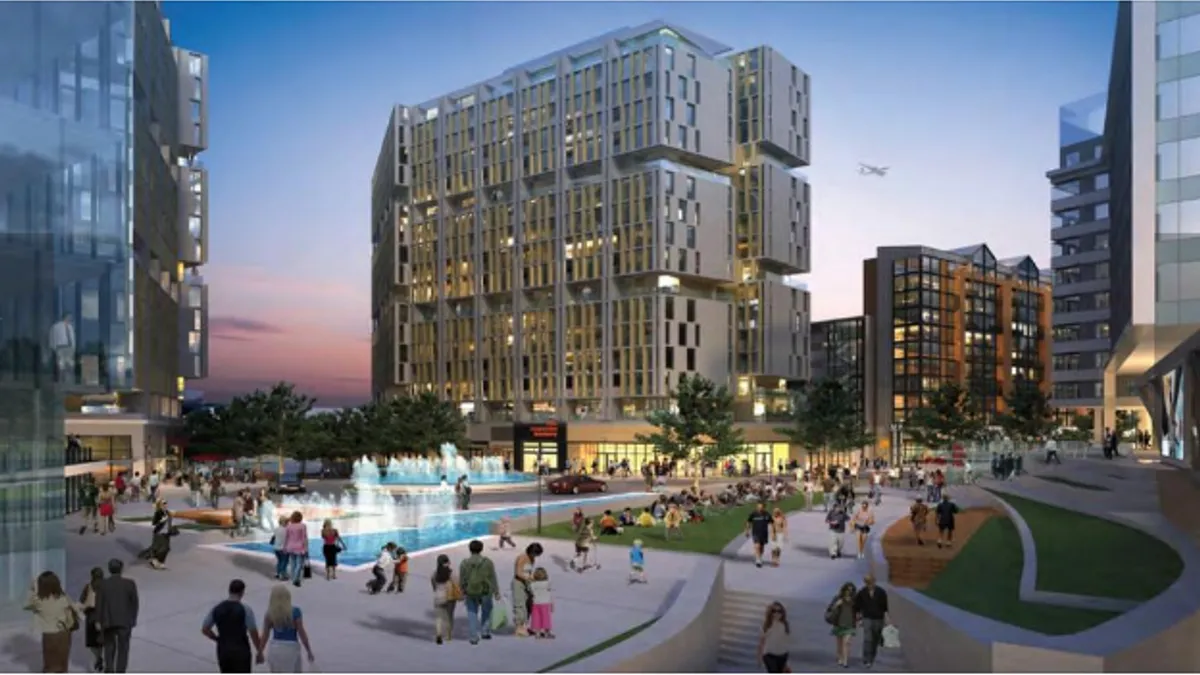Dive Brief:
- The Gramercy District "smart city" development in Ashburn, VA, will launch one year early due to an 8-acre mixed-use addition, scheduled to open in 2018, according to Bisnow.
- The $500 million Gramercy District has absorbed Ashburn 2005's adjacent commercial and retail development, now called Gramercy West, which will allow developer 22 City Link to begin leasing earlier than expected.
- The Gramercy West portion of the project is in addition to the originally planned 2.5 million square feet of mixed-use development, which includes three multifamily buildings, 350,000 square feet of office space and 150,000 square feet of retail.
Dive Insight:
Gramercy District is a collaboration between AECOM Tishman and Virginia-based Trinity Construction, which will build the project, as well as George Washington University, the Center for Innovative Technology and Microsoft, which will handle the technology end of the development. At the time of the project's announcement, officials said they wanted to create a "smart city in a box" model that could be easily rolled out in other locations.
When complete, the Gramercy District will allow residents and those who work there to use their smart phones and other devices to interact with the city.
Almost a year ago, Sidewalk Labs, a division of Google's parent company Alphabet Inc., announced its plans to get into the smart city business and said it was looking for a large, developable urban area to test its technology. Then, late last year, Sidewalk Labs announced that it had selected 16 cities around the U.S. as mini-labs where the company would provide upgrades to help them prepare for smart-city features to come, such as driverless cars.
Last July, research firm Gartner found that that smart cities would utilize 1.6 billion "connected things" by the end of 2016, which marks a 39% increase from 2015. The company also reported that smart homes would generate 21% of total Internet of Things (IoT) use by the end of 2016. Gartner projected that residential adoption of smart home features would increase so much over the next few years that it would outpace commercial use by 2018.













